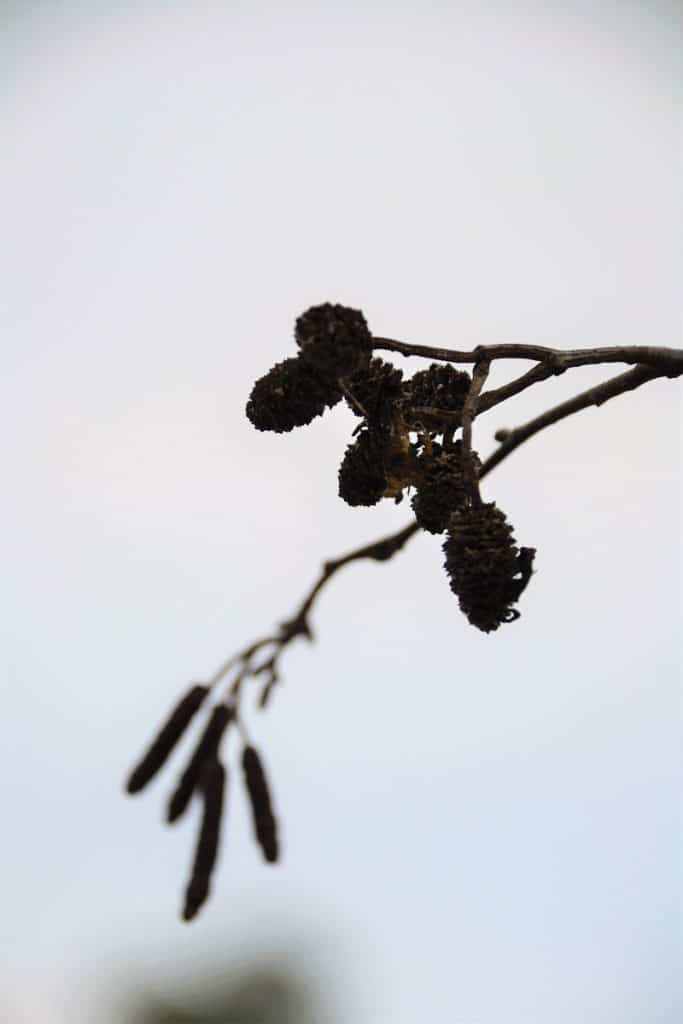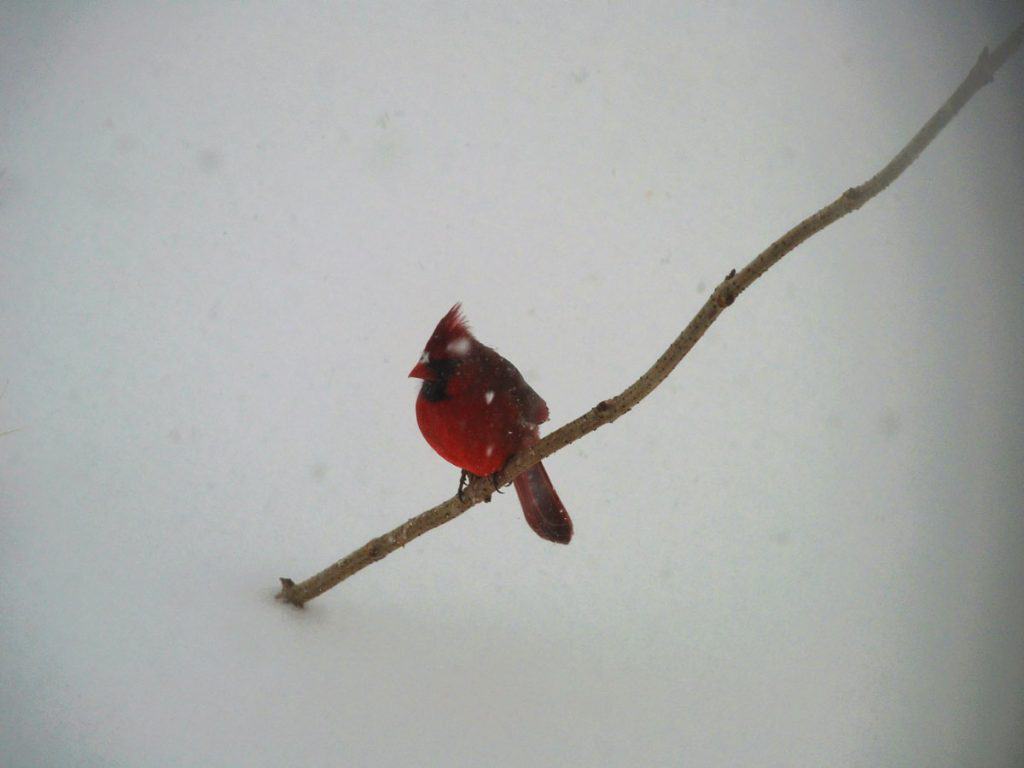Here’s what’s blooming in town this week to make your walks more enjoyable
Just like that the ground was white again! And a few hours later it had all melted! The cycles of warm days alternating with cold wind and snow are certainly keeping us on our toes. One day the mailman walks up the street in shorts, and the next he is fighting blizzard conditions. When you look down at the ground, green leaves of daffodils and other bulbs are peeping out, and when you look up into branches the flower buds of red maple (Acer rubrum) are brighter red and larger than they were a few weeks ago. Winter is not yet over but it is beginning to lose its stronghold, and hints at the coming spring are all around.
While we tend to admire evergreens for their winter appearance, some deciduous trees and shrubs also have features which attract attention in winter. One of the wild shrubs that attracts attention is the speckled alder (Alnus rugosa). Anyone walking near a pond or stream will notice the small strobili and catkins on the twigs. Alders are not closely related to conifers, but coincidentally have evolved to have a fruit with similar appearance. The strobili look like small pine cones and are the fruit which developed from female flowers. The male flowers or catkins are brownish, drooping and narrow, and like the strobili are noticeable throughout the winter. This species and the very similar hazel alder (Alnus serrulata) grow in wet areas and do not thrive in ordinary garden soil. Alders are members of the birch family, and when their foliage emerges in the spring it will have a somewhat similar shape to those of birches.
Another deciduous shrub that is grown primarily for its winter appearance is red twig dogwood (Cornus alba). The stems are an ordinary brownish tone in the summer, but as the chlorophyll in the leaves and stems begins to fade, it uncovers red pigments in the bark. The brightest red bark is found on branches younger than three years old. Selectively pruning out older stems in winter will encourage development of new growth with the most intense bark colors. Also known as Tatarian dogwood, this species is from Asia. The popular variety ‘Ivory Halo’ has white edges on its foliage, so this variety has additional beauty during the growing season. A native species which has similar reddish winter stems is red osier dogwood (Cornus sericea). This is abundant along the Saugus River in Breakheart Reservation, and colonies of it can be seen in North Saugus in swampy stretches along Water Street between Walnut Street and the Wakefield border. Both species prefer wetter than average soil.
Back on January 28 I reported that two waxed amaryllis bulbs from last year had developed green buds at the top of the bulbs, after not being planted or watered for the entire year. The waxed bulbs are extremely low maintenance and fit easily in a small space, like a windowsill, so even though the likelihood of a second year of bloom is not extremely likely, they should not automatically be thrown out after the first year. One of them is now in bloom, while the other’s emerging bud and foliage dried up before flowering. The one that is blooming has one good stalk with four red, greenish and white streaked blossoms. I would still recommend planting amaryllis bulbs in the traditional way in a pot with soil for greater likelihood that the bulb will continue to produce flowers for years to come. A succession of amaryllis bulbs is one good way to get through the winter until our outdoor bulbs start to come up!
Editor’s Note: Laura Eisener is a landscape design consultant who helps homeowners with landscape design, plant selection and placement of trees and shrubs, as well as perennials. She is a member of the Saugus Garden Club and offered to write a series of articles about “what’s blooming in town” shortly after the outbreak of the COVID-19 pandemic. She was inspired after seeing so many people taking up walking







